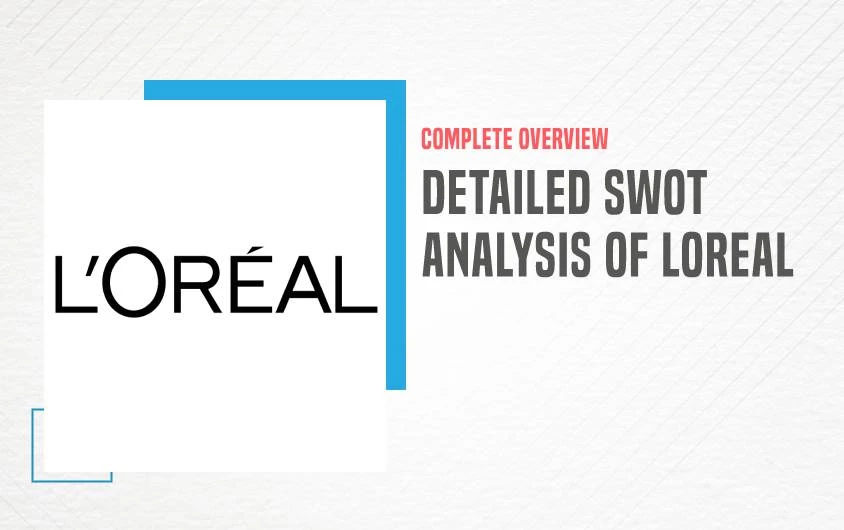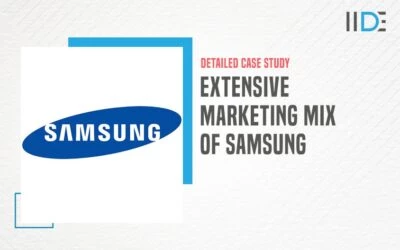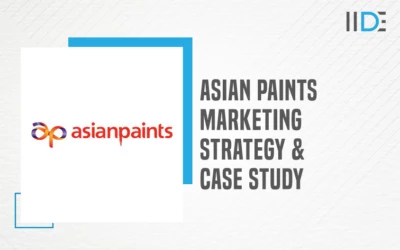L’Oréal came into the FMCG market long ago which offers high-end brands in beauty & cosmetic products that flourished and are the able rule in the hearts of people through excellent marketing and branding positioning for a very long time. L’Oréal serves the beauty demand of women of different cultures through research and innovation.
In this case study, we shall look into the SWOT Analysis of LOreal. As you read further, you will learn about the strengths, weaknesses, opportunities, threats and competitors of L’Oréal.
Let us now start this case study by learning about LOreal and how did the founders kickstart this business.
P.S. If you are interested in opening your own business today online, this guide is the ultimate helping hand.
About LOreal

L’Oréal S.A was formed by Eugène Paul Louis Schueller in 1909 and is based in Clichy, Hauts de Seine and has its head office in Paris. The firm was established with a branch office in 1909. It is the world’s first group of cosmetics. L’Oréal began a hair color business of its own but expanded into products such as cleansing, hair care, skin care, sun protection, cleansing and fragrances, dermatological, toxicological, and tissue engineering products, and biopharmaceutical research. L’Oréal operates across five continents in more than 130 countries, runs 42 manufacturing facilities, 6 research and development centers across the world, and has nearly 40 subsidiary companies.
SWOT Analysis of LOreal
A SWOT analysis compares an organization’s strengths, weaknesses, opportunities, and threats against those of its competitors. It’s a fantastic tool for determining whether a company is prospering, failing, or expanding. So, let’s look at Loreal’s SWOT analysis.
1. Strengths of Loreal
Strengths are the unique characteristics of an enterprise that provide it with a competitive edge for increasing market share, customer appeal, and optimizing profitability. L’Oréal has some of its strengths:
- L’Oreal isn’t merely a cosmetics company that sells low-cost items in department stores.
- They’ve also branched out into the luxury market, with high-end items for those with a larger budget. Alternatively, if a buyer wants a little bit of both worlds affordable and luxurious then L’oreal may help them discover it.
- Brands from all around the world are included in L’Oreal’s portfolio. L’Oreal is also available in over 120 countries. They produce and distribute things in large amounts, which is less expensive than buying small quantities individually.
- Consumers desire glowing skin and strong hair. For many people, this means fewer chemicals and potentially harmful components in their hair and skincare products. Natural components are more expensive for firms, but L’oreal didn’t hesitate.
- L’oreal relies substantially on research and development because it has so many products in different segments of the beauty and cosmetics market. Consumers desire items that are both functional and healthy for their bodies. That includes knowing how to incorporate sun protection into skincare and makeup.
- Loreal is a well-established global brand, they have a presence in more than 150 countries.
2. Weaknesses of Loreal
A company or brand’s weaknesses must be strengthened. So let’s review some of the biggest L’Oréal difficulties.
- There are always complications and problems with such a massive operation, and in L’oreal it’s a similar circumstance. Due to the different divisions, the corporation is regarded to be slow and bulky. The management of personnel is also a concern in L’oreal as the company employs about 60,000 people. Therefore, the expenses of human capital are enormous.
- Garnier has been a competitive brand because there is a lot of rivalry from both HUL and P&G in the hair care sector. In the haircare sector, Sunsilk is HUL, and the Head & Shoulders of P&G, are both quite strong.
- L’oreal’s profit margins are a little lower than its competitors due to higher investments in R&D, organic processes, and significant distribution expenses. However, while this has been a flaw, R&D has also helped L’oreal become one of the best companies in the cosmetics industry, so this flaw should be taken with a grain of salt.
3. Opportunities for Loreal
Opportunities are locations where a company can focus on performance, sales, and eventual profit improvement. Let’s look at the odds that Loreal has good results.
- There will only be increased market potential for personal and beauty care products. The world is an oyster, and developed economies develop and become new markets here and there. Exploring these new markets will give L’oreal higher sales than continuing on the same saturated markets.
- The extension of the product lines and the introduction of new items into the product mix will lead to the entire expansion of the product mix. This will also be the goal of L’oreal management.
- There is increasing demand for organic cosmetics. This demand is a favourable sign to L’oreal people who have employed organic R&D since the beginning.
- The use of technology can enhance Loreal’s brand image. They can use technology to improve shopping experiences and provide more personalization.
4. Threats to Loreal
Threats to the environment could prevent an expansion of a company. There are a few threats from L’Oréal
- In the cosmetics industry, there is increasing competition.
- Other countries are experiencing severe economic depression.
- While the L’Oreal Group may produce the best of its line, consumers may find that their products do not meet their basic demands, prompting them to forego purchasing L’Oreal items.
LOreal Competitors Analysis
The major competitors of L’Oréal are CHANEL, Unilever, Revlon, etc. These are FMCG giants but still succeeded. Some marketing strategies made, some marketing strategies made it hit the market, are:
L’Oréal uses famous models and celebrities for promotions. In India, former Miss World Aishwarya Rai Bachchan and Sonam Kapoor are used for promotion. Their face in various advertisement campaigns created trust amongst the consumers which acted as a major reason to be hit in the market. It is broadcasted on various television channels, in fashion magazines, neon signs, etc which has a lot of people interested in it.


These are some of the factors which lead to L’Oréal’s success. With brilliant marketing campaigns and branding strategies, they remained a top brand in the world for cosmetic products.
With this, we come to the end of the SWOT Analysis of LOreal. Let’s conclude this case study in the next section.
Conclusion
L’Oréal is the biggest cosmetic brand in the world making cosmetic products for over a century now, which is innovated based on research-driven data to meet customer satisfaction and need. Products are reasonable and high-quality products to enhance beauty.
IIDE aspires to prepare its students to plan and execute such campaigns, including the digital portion through creatives and surveys. We invite you to attend the Free Masterclass conducted by Karan Shah, CEO and Founder of IIDE, on digital marketing, coding, and graphic design, which are all professional options for paving the road for future entrepreneurs.
Please share your opinions on this case study in the comments section below. Thank you for taking the time to read it, and if you found it interesting, please share it with your family and friends.







0 Comments